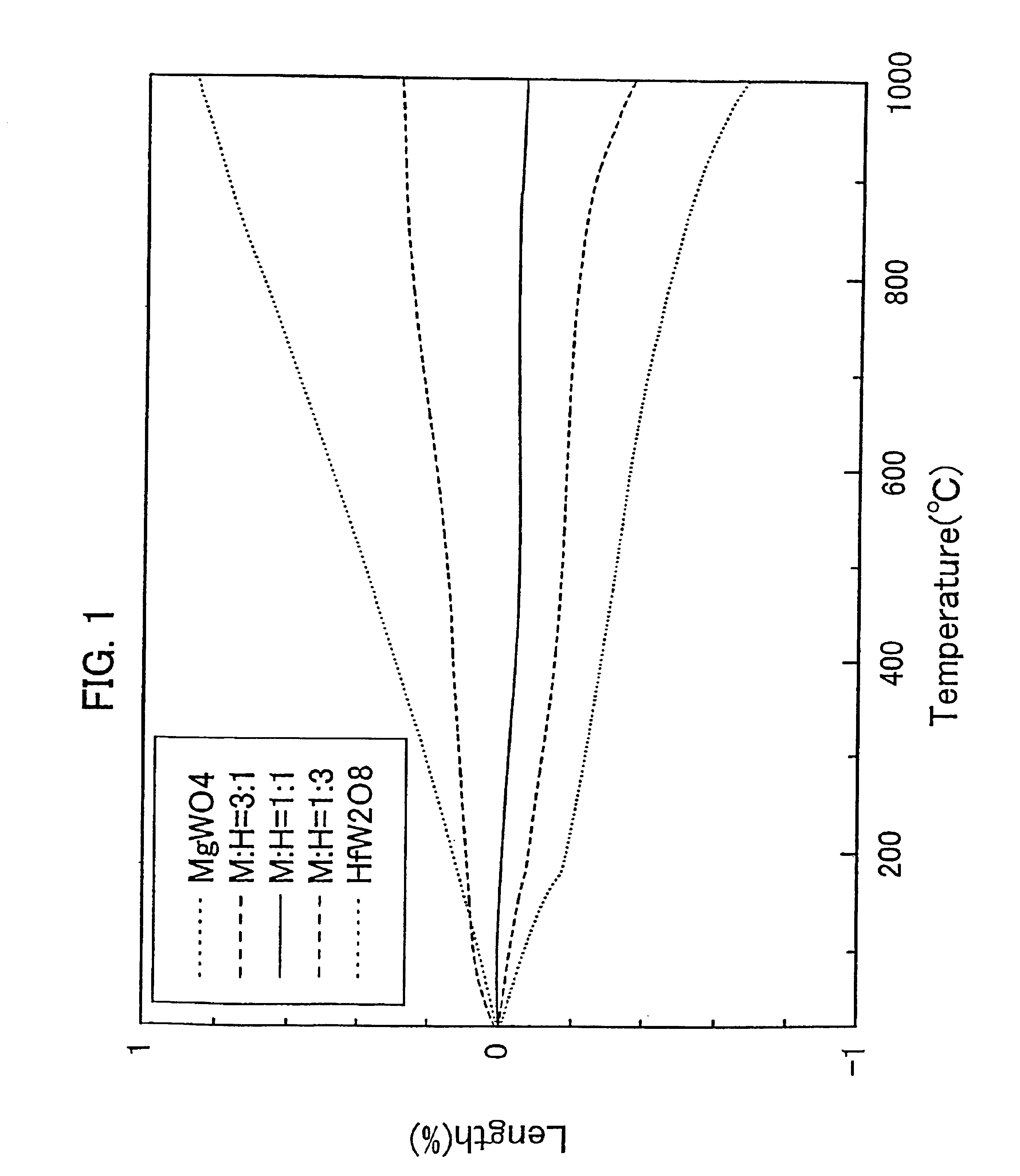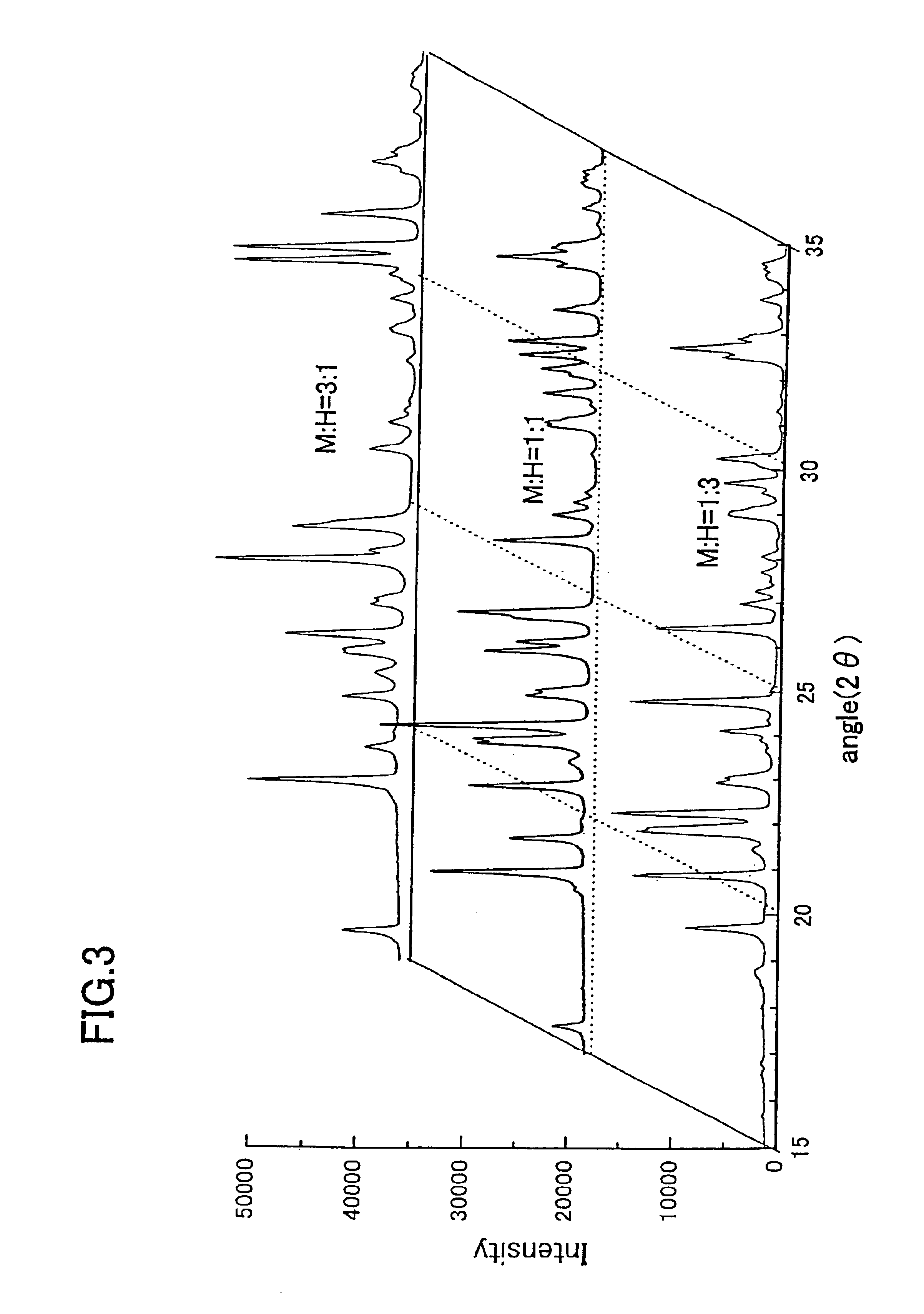Zero thermal expansion material and practical component parts making use of the same
a technology of zero thermal expansion and component parts, applied in solid-state devices, inorganic chemistry, electrical apparatuses, etc., can solve the problems of inability to achieve high working precision, large lowering of performance, and in accordance with expansion and contraction, so as to achieve zero thermal expansion coefficient, less variation in characteristics, and high workability. the effect of precision
- Summary
- Abstract
- Description
- Claims
- Application Information
AI Technical Summary
Benefits of technology
Problems solved by technology
Method used
Image
Examples
embodiment 1
In this embodiment of the present invention, shown is a case in which a zero thermal expansion material is produced using a material containing the double oxide represented by the chemical formula: (RM)(QO4)3 (wherein R is Zr, Hf or a tetravalent metallic element represented by a mixture system of these, M is Mg, Ca, Sr, Ba, Ra or a divalent metallic element represented by a mixture system of these, and Q is a hexavalent metallic element selected from W and Mo). Materials used are a material A [A is a material having a crystal system of RQ2O2, and having a coefficient of thermal expansion which is negative (coefficient of thermal expansion: α(α>0); density: a] and a material B [B is a material having a crystal system of MQO4, and having a coefficient of thermal expansion which is positive (coefficient of thermal expansion: β; density: b]. Coefficients of thermal expansion of chief materials are shown in Table 1 below.
TABLE 1Coefficient ofDielectric constantthermal expansionMaterials...
embodiment 2
FIG. 4 is a perspective view showing a band-pass filter making use of the zero thermal expansion material, according to this Embodiment.
To the outset, using the calcined powders of HfW2O8 and MgWO4 weighed in a weight ratio of 1:1 as used in Embodiment 1, these were mixed together with a binder resin by means of a ball mill, and a green sheet was obtained from the resultant mixture by a doctor blade method. Then, the green sheet thus obtained was cut in a desired size, and twenty cut sheets were so piled up as to be 1 mm in plate thickness after firing, followed by compression molding. The molded product obtained was fired at 1,150° C. to obtain a platelike sintered body for a high-frequency circuit substrate. The coefficient of thermal expansion of this plate was measured to find that it was +0.8 ppm / ° C. Needless to say, the plate produced here contained the material of (HfMg) (WO4)3.
Next, as shown in FIG. 4, this platelike sintered body was used as a dielectric substrate 1 of a h...
PUM
| Property | Measurement | Unit |
|---|---|---|
| temperature | aaaaa | aaaaa |
| density | aaaaa | aaaaa |
| density | aaaaa | aaaaa |
Abstract
Description
Claims
Application Information
 Login to View More
Login to View More - R&D
- Intellectual Property
- Life Sciences
- Materials
- Tech Scout
- Unparalleled Data Quality
- Higher Quality Content
- 60% Fewer Hallucinations
Browse by: Latest US Patents, China's latest patents, Technical Efficacy Thesaurus, Application Domain, Technology Topic, Popular Technical Reports.
© 2025 PatSnap. All rights reserved.Legal|Privacy policy|Modern Slavery Act Transparency Statement|Sitemap|About US| Contact US: help@patsnap.com



